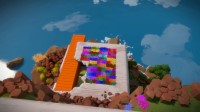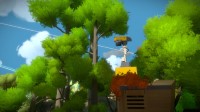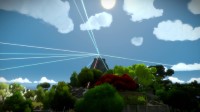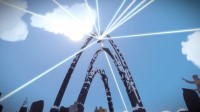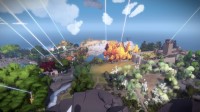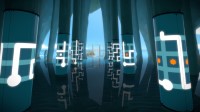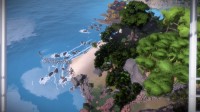The Witness
Playtime: 11 Hours
Finished 31 May 2023.Powered on all 11 lasers and completed the normal ending - final puzzle count was 410 panels solved out of 523. Didn't do any of the obelisks, but did find a couple of vaults - won't be going back for the secret ending though, I don't think I need to play more of this.
This game is a short but enjoyable puzzler and not really much else. There isn't much in the way of story; the game is just about a random dude in a weird island world with a bunch of puzzles to solve. There are a number of audio logs strewn about the world that you can listen to with random clips of people mumbling pseudo-philosophical trite; I didn't really feel like these really had much of a point, or had anything actually important or thoughtful to say. It feels like they randomly selected a bunch of deep-sounding passages and narrated them, and probably could have been left out altogether. I spoiled myself and looked up the alternate ending, which basically reveals the entire game takes place in a dream sequence VR simulation which is also already lightly alluded to in the normal ending as it is. The visuals and environment, while put together nicely and quite pretty to look at, are generally quite simple as well - the different biomes/areas are very distinct as well which make it clear when you've crossed over into another area, with a different set of puzzles.
It's clear the game is entirely focused on the actual puzzles themselves, which are generally focused around a core "line puzzle" mechanic involving drawing a line around a square grid to satisfy varying conditions. There's some really cool use of the immediate environment in these mechanics, too - for example, in the monastery area, surrounding tree branches are used to indicate blocking points on an otherwise empty grid, or to overlay the correct path to take. Mirrored lines, overlapping, color separation, "blocks", and other interesting elements are combined in puzzles throughout the game to make for a challenging but entertaining experience. The vast majority of the game nails a balance of difficulty that isn't overwhelmingly difficult to be exhausting, while also not trivial enough to be boring. There's always a bit of a rush when solving a panel. I will note that there aren't many puzzles on a "grand" scale, though - unlike The Talos Principle for example. With few exceptions, every puzzle is generally isolated from all others as they each use separate grids. One thing I like about the way progression is handled is that for the standard ending, you are able to pick and choose the lasers you want to activate, allowing players to bypass certain types of challenges that they find more difficult or less interesting. As a reference, there are 523 normal panels in the game, but only 107 of them need to be solved to reach the ending, which also includes the entire final area.
While my general experience with the game was very positive, it's far from flawless in my opinion. Firstly, the singular reliance on the line mechanic does kind of make it feel a bit like a mobile game at points; some mechanics make great use of the environment, but some others basically just feel like any tap-and-drag mobile line game. At the same time, the extremely limited scope of the player's interactions with the environment (pretty much limited to puzzles & audio logs) mean that a lot of the really creative puzzles actually just revolve around "find the magic pixel/spot" mechanics, which honestly aren't challenging when used extensively so much as they are tedious (the reflection puzzles in the desert ruins, and some of the endgame puzzles were especially bad here). This is just like Portal 2's "find the white wall" issue - you know what the solution is, but you need to spend a bunch of time basically just walking around randomly to find the one position where you can barely see what to do. I can't really count my gripes against the game too heavily, though - since I know that the team behind this game was very small, so they prioritized only a few crucial elements of control and interactivity to produce the puzzles.
Overall, well worth playing. Not too difficult outside of a few panels (~10 of them probably) that stumped me for a while, but I feel like the mechanics don't really have legs to carry the game beyond the one playthrough that I did.

